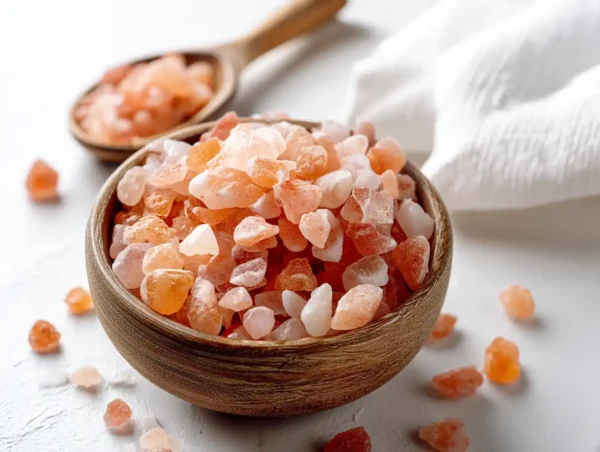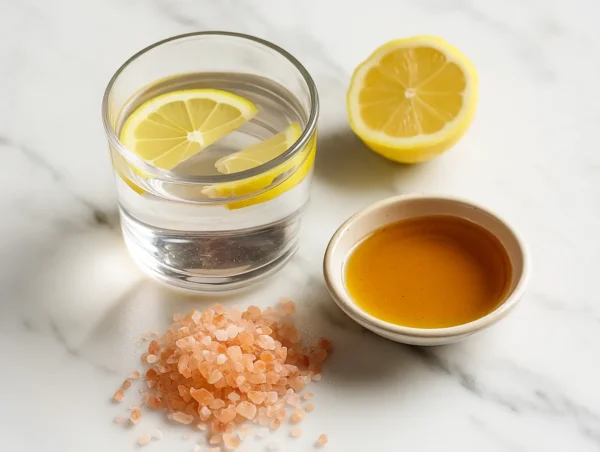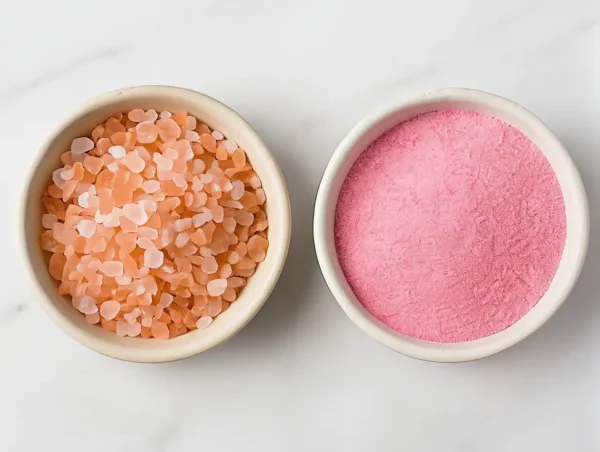Warning: not all “pink salts” belong in your salt shaker. The first time I saw Himalayan pink salt and curing salt side by side, I was struck by how similar they looked. This article explains the real truth about curing salt vs Himalayan pink salt so you never face a dangerous kitchen mistake.
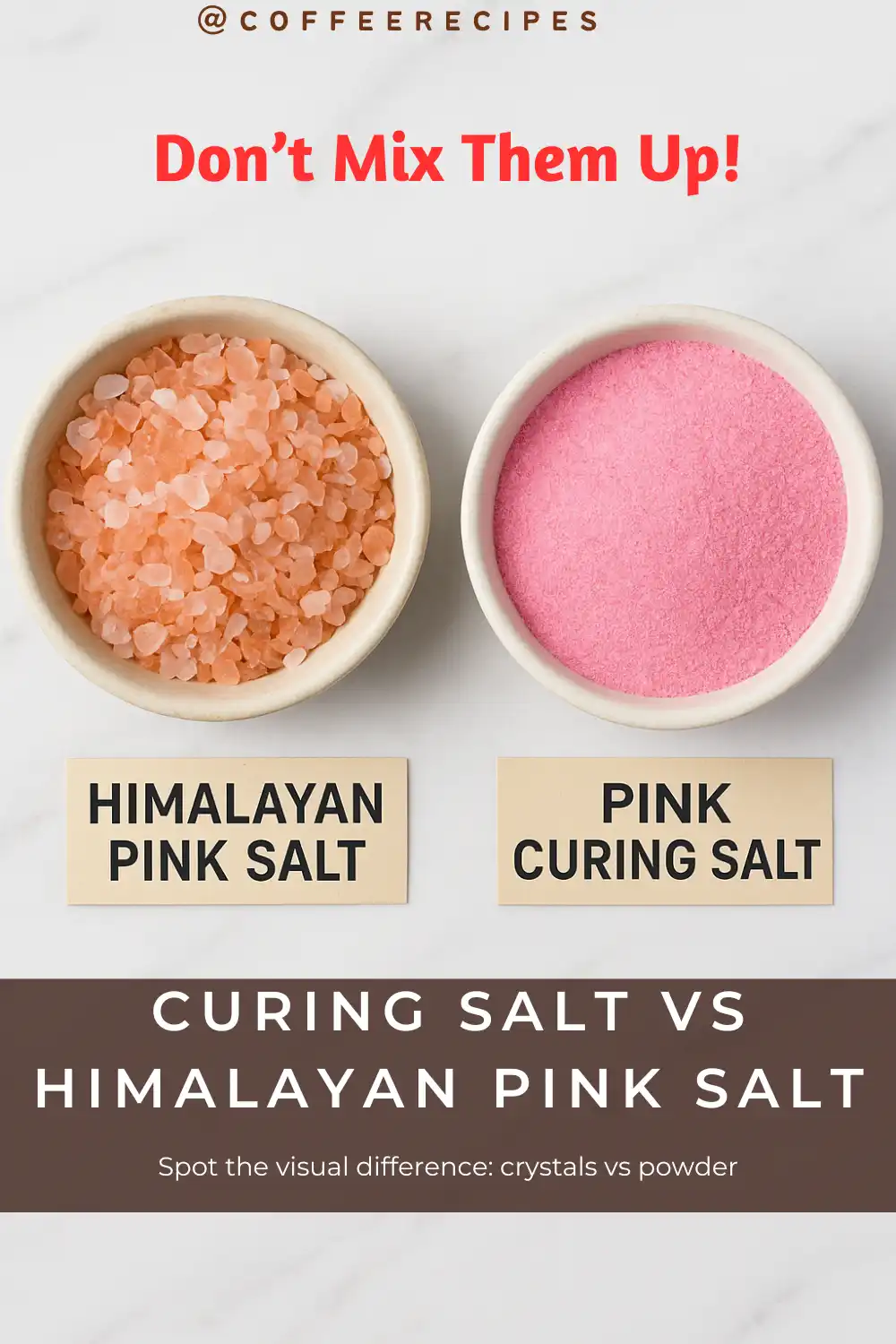
Table of Contents
What is Himalayan Pink Salt? (A Reminder)
I remember the gentle crunch of Himalayan pink salt sprinkled on roasted potatoes. This salt is almost 98% sodium chloride, with its natural blush coming from trace minerals such as iron and magnesium. Unlike curing salt, it has no added chemicals and is harvested from ancient deposits in Pakistan, deep inside the Khewra mine.
For generations, Himalayan pink salt has been celebrated not only for its delicate flavor but also for its beauty. My aunt would even keep a pink salt lamp glowing in her kitchen, convinced it made the air feel fresher. While the lamp’s effects are debatable, the salt itself is undeniably real, natural, and safe for seasoning.
What makes Himalayan salt unique is its versatility: sprinkled over grilled vegetables, mixed into marinades, or simply placed on the table for daily meals. It is food-grade and recognized as safe by agencies like the FDA. To learn more, see our complete guide on Himalayan pink salt.
What is Curing Salt (“Pink Curing Salt”)?
The first time I tried making bacon at home, I discovered that curing salt, often called Prague powder, was essential but nothing like table salt. It is designed for food preservation, not flavoring, and its role in charcuterie is both fascinating and strict.
Composition
Curing salt is made from sodium chloride mixed with 6.25% sodium nitrite. This nitrite prevents the growth of botulism bacteria, making it vital for cured meats like ham, jerky, or sausages. However, this same compound makes it unsafe to use as seasoning.
Artificial Coloring
Unlike Himalayan pink salt, curing salt is artificially dyed bright pink. The purpose is practical: to warn cooks never to confuse it with table salt. Still, its color often misleads people when recipes simply mention “pink salt.”
Prague Powder #1 vs #2
Prague Powder #1 contains nitrite only, used for short cures such as bacon or corned beef. Prague Powder #2 adds nitrate, designed for long-term cures like salami. Mixing them up, or confusing them with Himalayan pink salt, can have disastrous results.
Usage and Risk
Curing salt must always be weighed precisely, often just a few grams per kilogram of meat. Too little, and you risk bacterial growth; too much, and you risk poisoning. Every curing guide stresses strict measurement for safety. For more details, see our article on pink salt myths and truths.
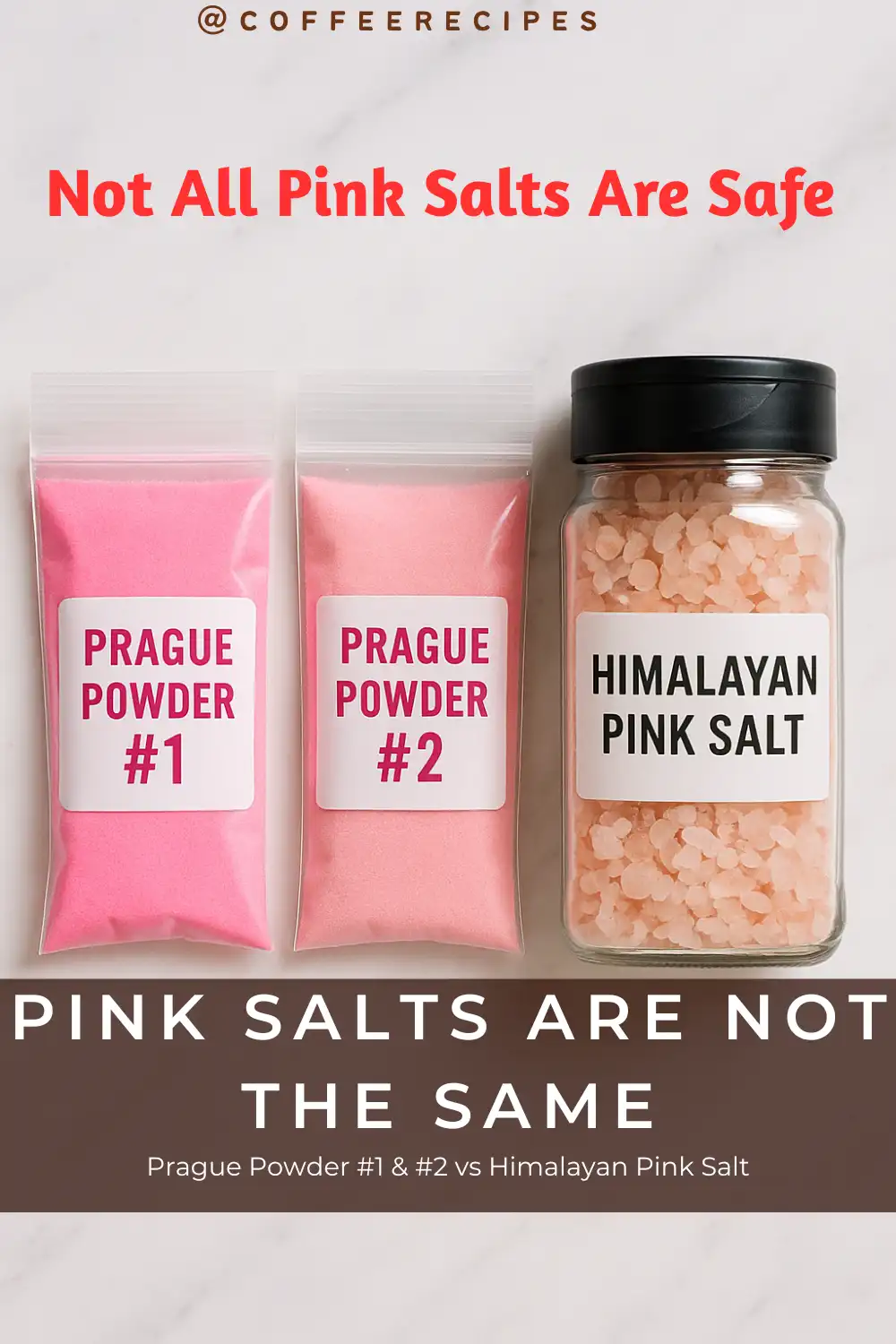
Curing Salt vs Himalayan Pink Salt: The Real Danger
I once saw a friend accidentally reach for curing salt while seasoning soup. Thankfully, the mistake was caught in time, but it showed how easy confusion can be when salts look alike. Here’s why curing salt vs Himalayan pink salt should never be taken lightly.
Toxicity of Sodium Nitrite
Sodium nitrite is a preservative, not a flavor enhancer. Ingesting it directly can cause nausea, dizziness, or worse. Long-term, nitrosamines may form, posing additional health risks. This is why curing salt is packaged with warnings and never sold as a regular condiment.
Comparison Chart
| Aspect | Himalayan Pink Salt | Curing Salt |
|---|---|---|
| Label | “Himalayan Pink Salt” | “Prague Powder” or “Cure #1/#2” |
| Ingredients | ≈98% Sodium Chloride + minerals | NaCl + 6.25% Sodium Nitrite |
| Color | Natural pink hue | Artificially dyed pink |
| Texture | Crystals, uneven grains | Fine, powder-like |
| Where to Buy | Markets, natural stores | Butchers, curing suppliers |
| Use | Cooking, finishing dishes | Meat preservation only |
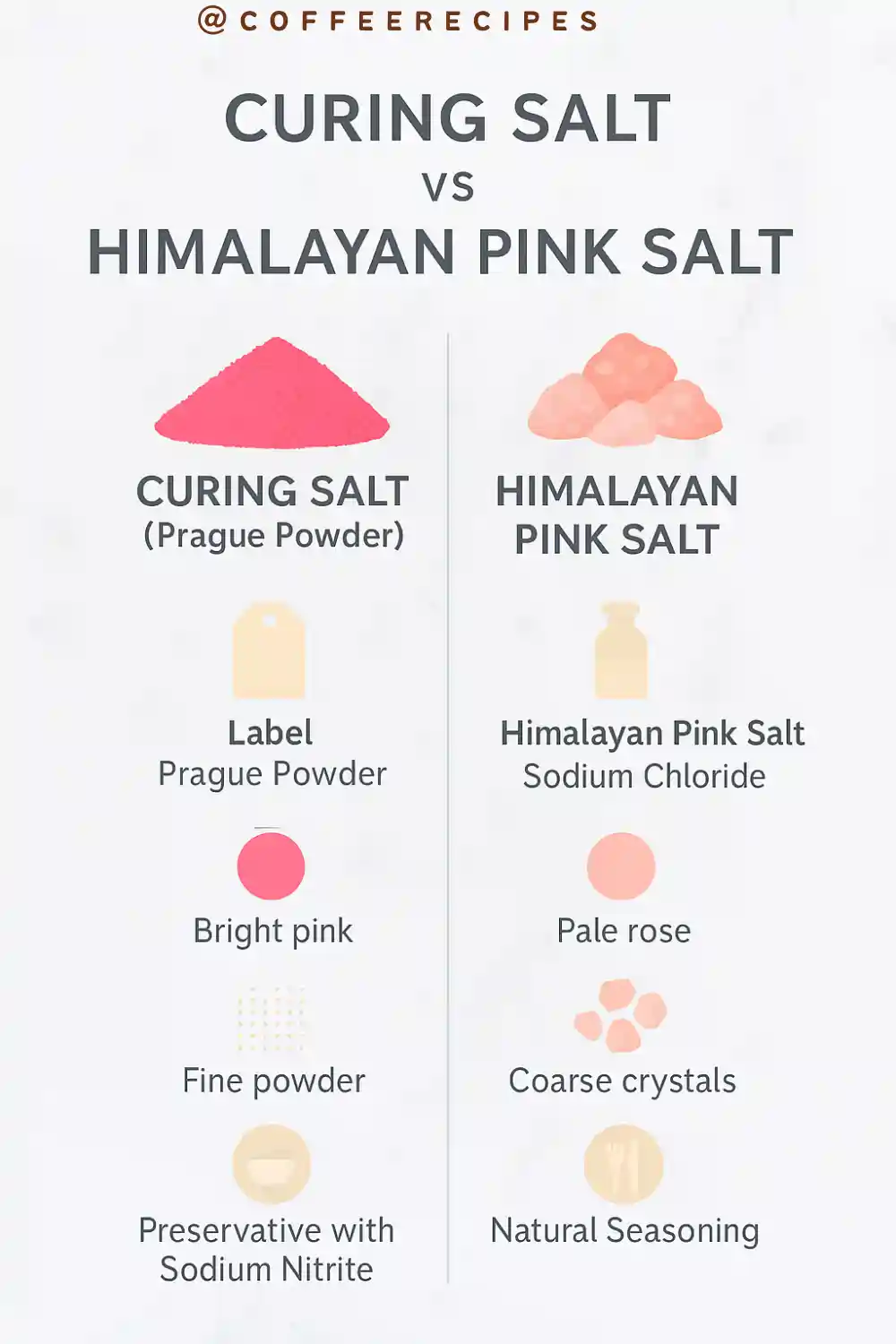
Storage Tip
Keep curing salt in a sealed, clearly labeled container, ideally with a warning sticker. Store it apart from daily ingredients. For safe cooking alternatives, discover our page on salt blocks.
How to Tell Them Apart at a Glance
The easiest way to avoid mistakes is to check packaging and texture before using the salt. Over the years, these simple habits have spared me from costly errors.
Label and Packaging
Himalayan pink salt is sold as food-grade seasoning, often in jars or grinders. Curing salts carry names like “Prague powder #1” or “Cure Mix,” usually in plain bags. Any label that says “quick cure salt” should signal that it’s not for daily cooking.
| Check | Safe Choice | Danger Zone |
|---|---|---|
| Label | Himalayan seasoning | Prague Powder, Cure Mix |
| Texture | Crystal-like, uneven | Fine, powdery |
| Color | Natural, subtle pink | Bright, artificial pink |
Where They Belong
I keep Himalayan salt on the counter for everyday seasoning, while curing salt stays locked away with my sausage-making tools. A bright label reading “Not for cooking” on the curing jar has spared me from stress and confusion, especially when guests help in the kitchen.
Final Thoughts
Every time I see both salts on the same shelf, I remind myself that safety starts with awareness. Himalayan pink salt brings flavor and beauty to food, while curing salt protects preserved meats. The two are not interchangeable.
At home, I follow a ritual: Himalayan salt always sits in a grinder on the counter, while curing salt is kept deep in the pantry, clearly marked and measured only for charcuterie. When in doubt, don’t use it. Trust the difference, respect the roles, and your kitchen will remain both authentic and safe.
FAQ Curing Salt and Himalayan Pink Salt
Can I use Himalayan pink salt instead of curing salt?
No. Himalayan pink salt lacks sodium nitrite, so it cannot prevent botulism. The curing salt vs Himalayan pink salt difference is critical for safe meat preservation.
Why is curing salt dyed pink?
Curing salt is artificially colored pink as a warning. Without this, it would look too much like Himalayan pink salt, increasing the risk of mistakes in food preparation.
What happens if I season food with curing salt by mistake?
Even small amounts can be toxic. If this happens, discard the dish immediately. The pink salt danger is real, and safety means avoiding accidental consumption.
What is Prague Powder #1 vs #2?
Prague Powder #1 is for short cures like bacon, while #2 adds nitrate for long-term cures such as salami. Neither should replace Himalayan pink salt in everyday cooking.
Is Himalayan pink salt the same as curing salt?
No. Himalayan pink salt is a natural seasoning made of sodium chloride and minerals, safe for cooking. Curing salt, sometimes called Prague powder, contains sodium nitrite and is used only for preserving meat.
Can I substitute Himalayan pink salt for curing salt?
Never. Himalayan pink salt lacks sodium nitrite, which is essential to prevent botulism. Replacing curing salt with Himalayan salt makes preservation unsafe.
Why is curing salt dangerous if used like table salt?
Curing salt contains sodium nitrite, which is toxic if consumed in normal food amounts. It was never intended for seasoning, its only role is preventing bacterial growth during curing.
What makes curing salt vs Himalayan pink salt different?
The main difference is purpose: Himalayan pink salt is for flavoring food, while curing salt is for preserving meat. Using one in place of the other is unsafe.

